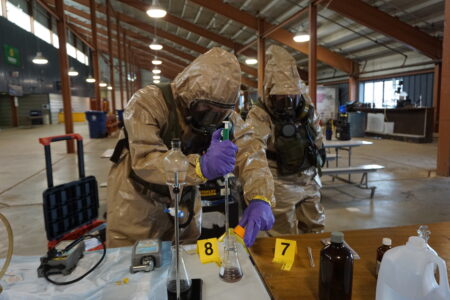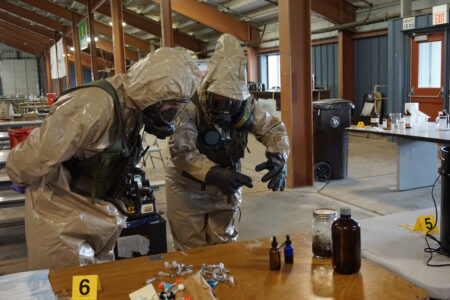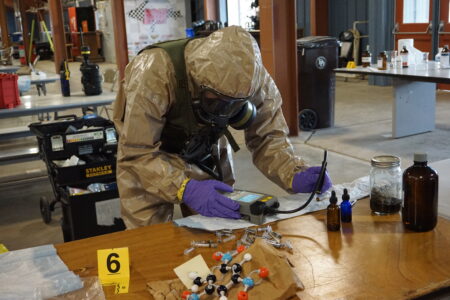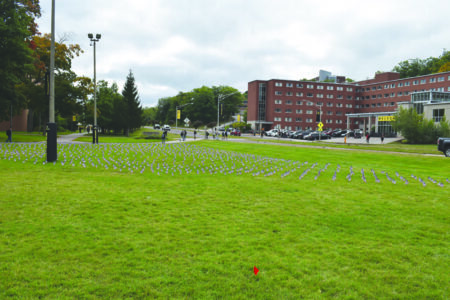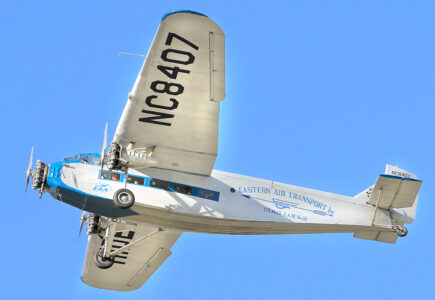Michigan, Wisconsin National Guard train at fairgrounds
- Members of the MING 51st WMD-CST practiced identifying materials using two devices; a Thermo Scientific FirstDefender RM and a TruDefender FTX Handheld FTIR. Both handheld devices are used to assist in identifying unknown chemicals while in the field. (Sophie Vogelmann | Daily Press)
- Several tables in the U.P. State Fairgrounds grandstand building were set up with various scientific equipment items for the National Guard training exercise between Michigan and Wisconsin teams this week. (Sophie Vogelmann | Daily Press)
- Members of the MING 51st WMD-CST attempt to identify materials used in their drill.
- One member of the MING 51st WMD-CST used one of the handheld devices to identify a substance in a vial by holding part of the device close to the substance.
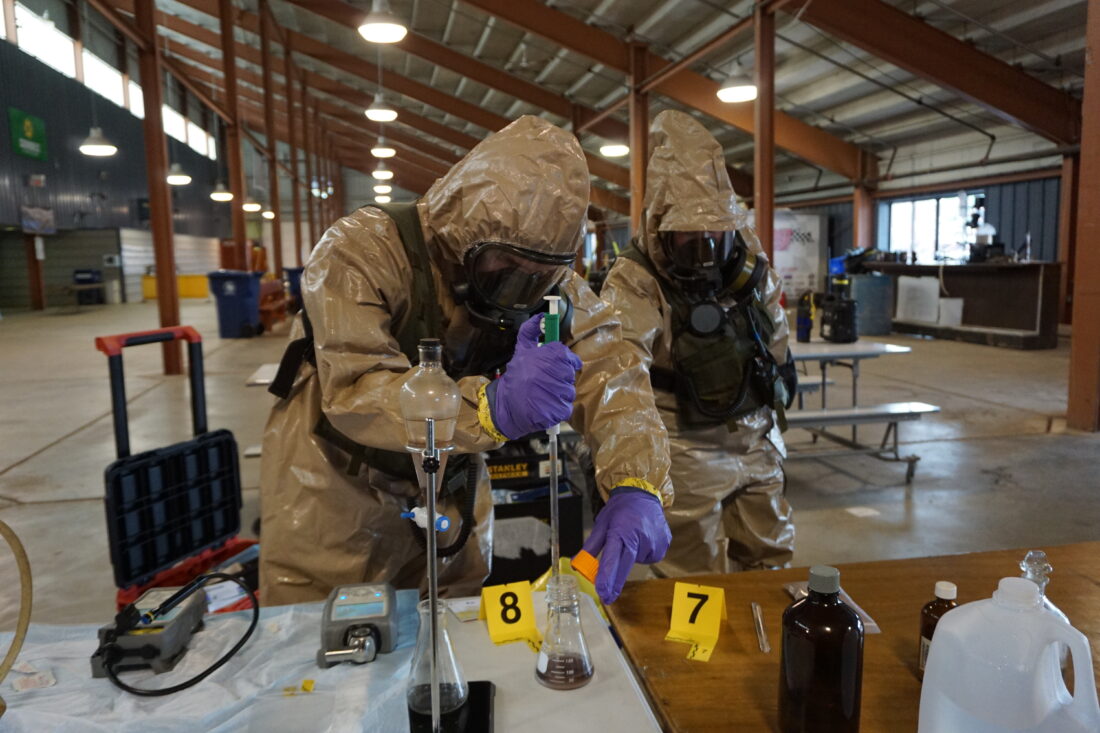
Members of the MING 51st WMD-CST practiced identifying materials using two devices; a Thermo Scientific FirstDefender RM and a TruDefender FTX Handheld FTIR. Both handheld devices are used to assist in identifying unknown chemicals while in the field. (Sophie Vogelmann | Daily Press)
ESCANABA – A joint National Guard exercise between Michigan and Wisconsin teams took place this week at the Upper Peninsula State Fairgrounds in Escanaba.
The Michigan National Guard 51st Weapons of Mass Destruction Civil Support Team partnered with the Wisconsin National Guard 54th WMD-CST — as well as a range of federal, state and local agencies — to conduct the joint training operations Tuesday through Thursday.
“This planned exercise will feature multiple CSTs (Civil Support Teams) and agencies integrating their response efforts to a complex chemical, biological, radiological and nuclear defense — or CBN — threat, including hazardous environment procedures, incident command coordination and airlift operations to rapidly deploy forces and equipment, simulating a swift response to a critical and time sensitive emergency scenario,” a news release stated.
The 51st WMD-CST is based at the Fort Custer Training Center in Augusta near Battle Creek, Michigan.
It received the call Monday evening to take part in the drill to simulate a real CBN threat in the Upper Peninsula. The team of 22 men and women, with 18 Army members and four Air Force members, arrived late Tuesday.
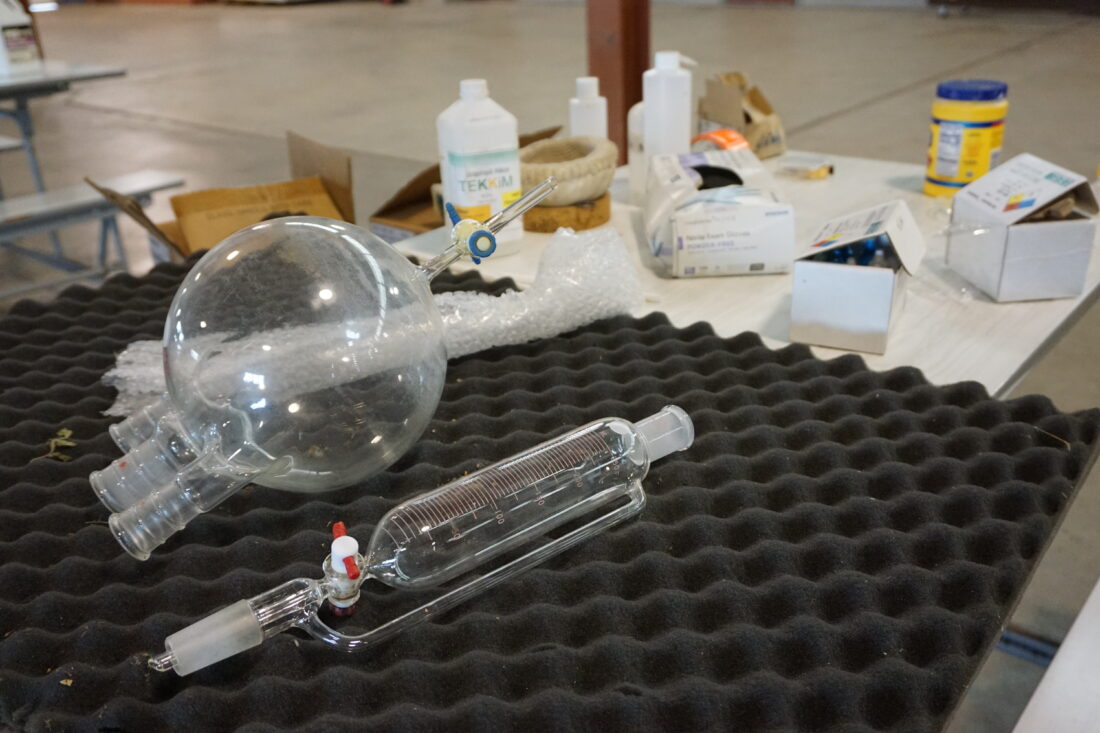
Several tables in the U.P. State Fairgrounds grandstand building were set up with various scientific equipment items for the National Guard training exercise between Michigan and Wisconsin teams this week. (Sophie Vogelmann | Daily Press)
If a real threat were to arise, local law enforcement or the Delta County Emergency Management department would contact the Homeland Security Division within the Michigan State Police. Homeland Security would then request the MING 51st WMD-CST. The Michigan team, in turn, would contact the Wisconsin National Guard 54th WMD-CST based in Madison, Wis. Because it takes the Michigan team longer to arrive, they partner with the Wisconsin team who can reach the site more quickly.
The Wisconsin National Guard 54th WMD-CST arrived Tuesday morning. Training exercises began Wednesday.
Delta County Emergency Management Coordinator Paul Geyer and Schoolcraft and Iron County Emergency Management Coordinator Chris Peterson attended the training operations as well this week to meet the members of the teams that would assist with a real threat.
The MING 51st WMD-CST includes a captain, Christopher Pawsat, who also serves as an infantry officer; a commander who serves as a military police officer; communication experts; CBRN experts; and more.
“We’re just a very diverse team that can really bring a lot of different perspectives, whether its operations processes, command recommendations, or just doing the sampling,” Pawsat said.
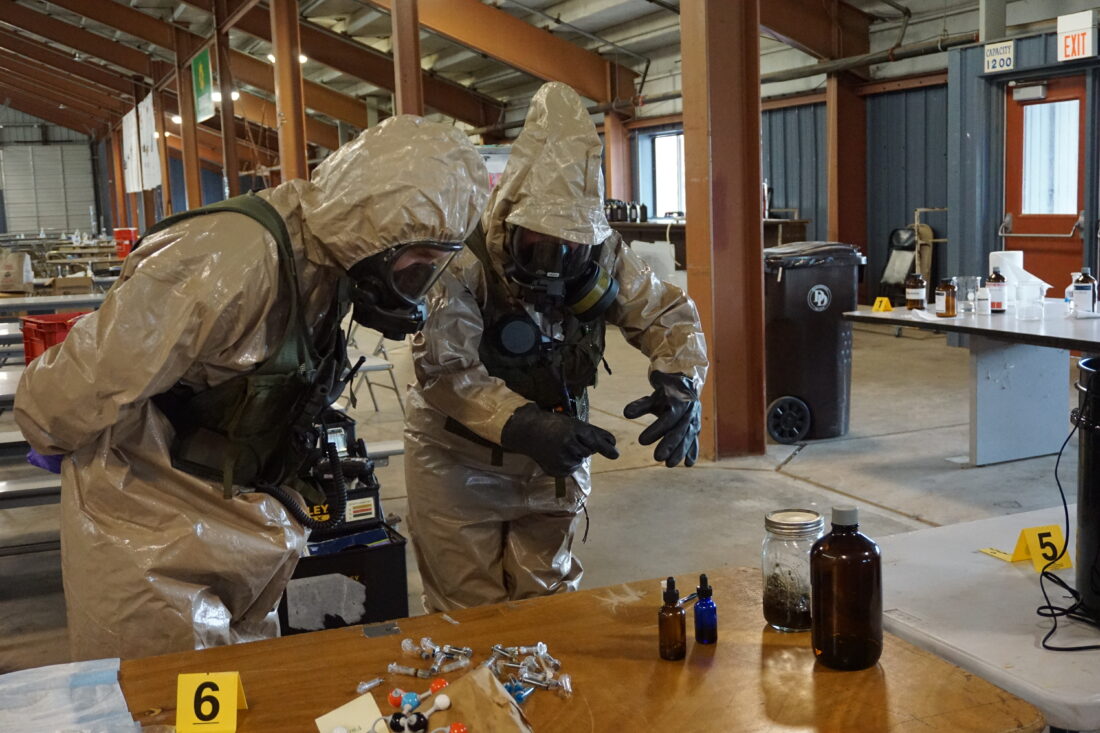
Members of the MING 51st WMD-CST attempt to identify materials used in their drill.
“What we do is identify, assist and advise local authorities on responses to hazmat incidents or weapons of mass destruction incidents,” Pawsat said.
The captain also is Region 8’s liaison who coordinates efforts and support between authorities in the Upper Peninsula. “We have a liaison assigned to every Michigan State Police Emergency Management District,” he explained.
“As the new (liaison) here in Region 8, it’s really important to me to show the community that we’re here to help with any WMD or hazardous incident,” Pawsat added.
The Wisconsin National Guard 54th WMD-CST and the Michigan National Guard WMD-CST would assist in site characterization, sample the material to get presumptive results and recommend how to mitigate the incident in an emergency.
“Our main job is to come up and assist those local and federal authorities,” Pawsat said.
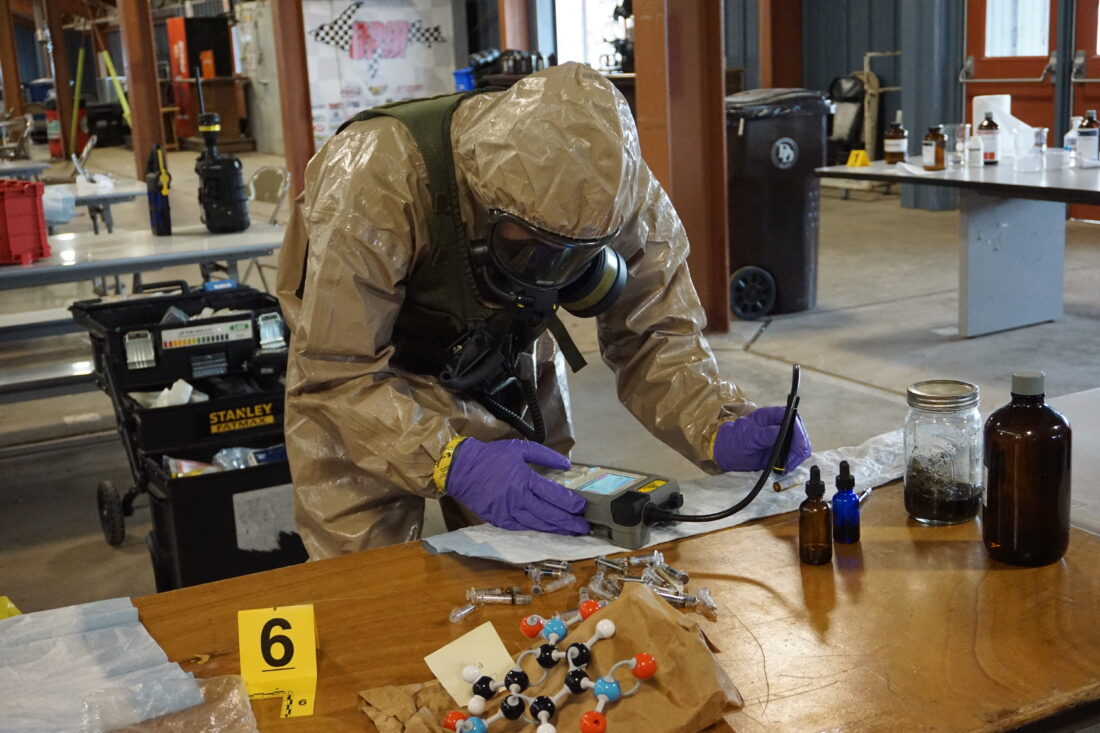
One member of the MING 51st WMD-CST used one of the handheld devices to identify a substance in a vial by holding part of the device close to the substance.
Such joint training operations help ensure the team is prepared to handle emergency situations in the Upper Peninsula, he said, adding the Michigan National Guard 54th WMD-CST ideally would like to do these operations in the Upper Peninsula at least once a year.
Pawsat also travels to Marquette to attend the Emergency Manager district meetings as often as he can.
“That’s a big push for me, to show that we’re here in the Upper Peninsula ready to respond to anything that may occur up here,” he said.

